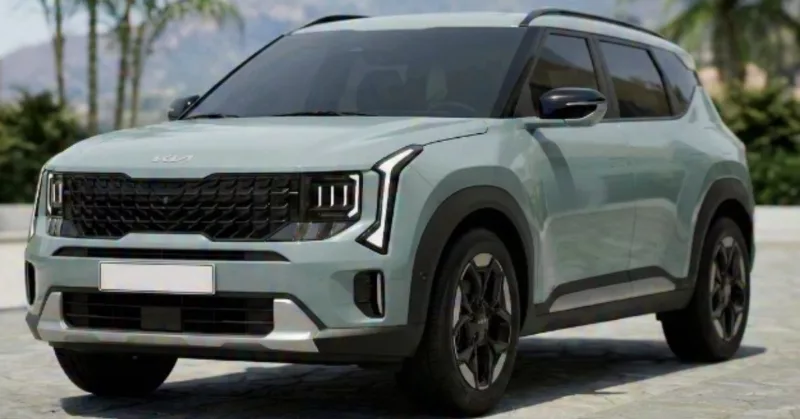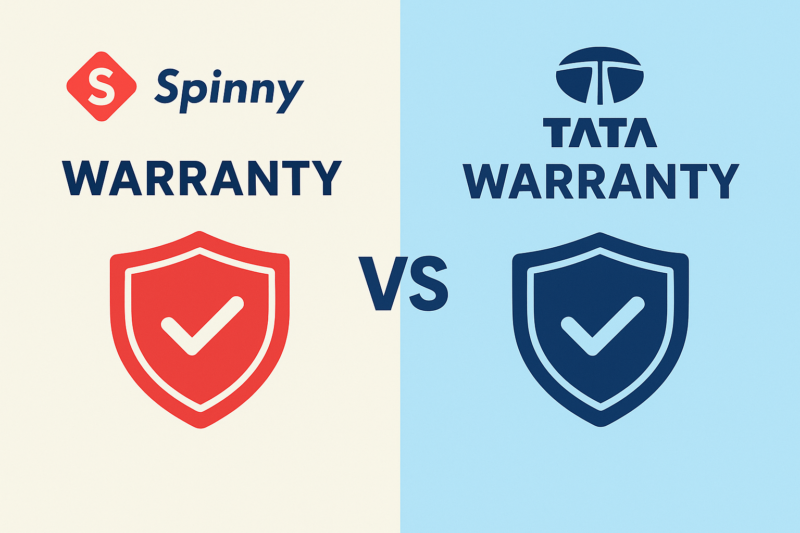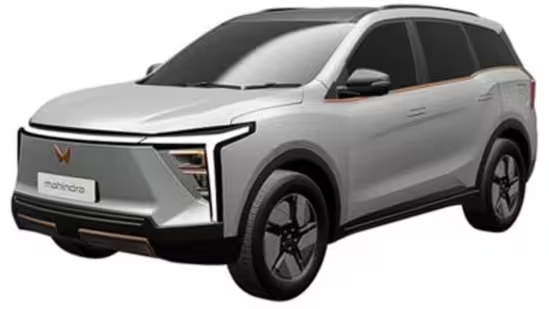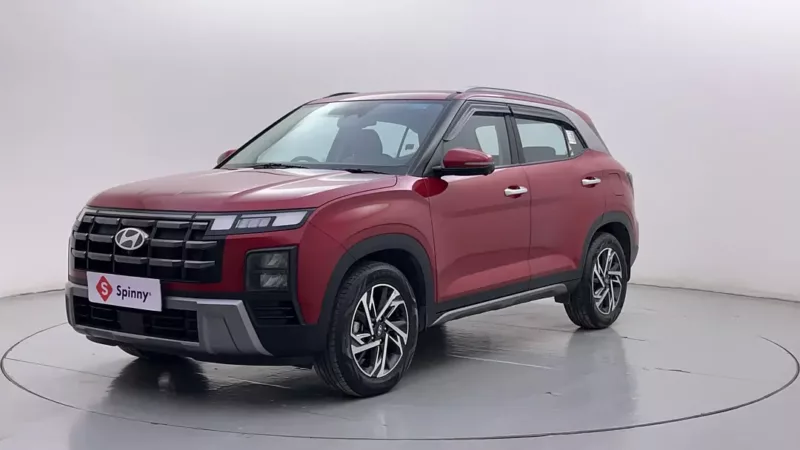If you are in the market looking to bring home a car that’s spacious, practical, comfortable and feature-rich, then a midsize sedan could be the perfect choice. While there may be quite a lot of options in the market, if you are looking for maximum savings then a pre-owned sedan is what you need. And when it comes to buying a reliable sedan that checks all the boxes, then the Volkswagen Vento is a sedan that you shouldn’t miss.
Bidding adieu to the market in 2022 alongside the Polo, the Volkswagen Vento still commands a glorious legacy of over a decade, with several powertrain and transmission options to choose from. As a pre-owned sedan, the Vento offers a value-for-money package that delivers on every aspect. Amongst one of the most exhilarating sedans to drive, the Vento was and continues to be a great choice. As a pre-owned sedan, the Vento offers a lot for a price that won’t burn a hole in your pockets. But before you head out to bring home a pre-owned Volkswagen Vento here are 4 things you should keep in mind.
Pre-owned Volkswagen Vento Generations
With modern-day sedans bringing out a revamped generation every few years, what makes the Vento’s legacy rather unique is the fact that the sedan never changed generations in its entire run. Launched in 2010, the Volkswagen Vento despite offering the same generation for over ten years, did spice it up a bit with changing powertrains and transmission options and a facelift launched in 2015. Here’s more about Vento’s legacy.
Volkswagen Vento: 2010 to 2012

In the initial years of its launch, the Volkswagen Vento cashed in on its reliable build quality and superb driving dynamics that were achieved by two capable engines that included a 1.6-litre petrol and a 1.6-litre turbocharged diesel engine. Transmission options included a 5-speed manual common for both engines along with a 6-speed automatic for the petrol.
Volkswagen Vento: 2013 to 2014

With the Vento clocking in good numbers in terms of sales, this was the time when the German Automaker launched the Volkswagen Vento TSI replacing the 1.6 litre, automatic petrol powertrain with a new 1.2 litre turbocharged petrol engine that came mated to a peppy 7-speed DCT automatic. This was also the time when the 1.6 litre TDI diesel engine of the Vento was axed in favour of the new 1.5 litre TDI diesel engine that even offered a 7-speed DCT automatic in addition to the manual. This made the Vento even more appealing with the new petrol and diesel automatic engines doing wonders for the Vento’s popularity that solidly stood upon the driving dynamics of the sedan.
Volkswagen Vento: 2015 to 2019

The year 2015 was rather special for the sedan, as it was the year when the Volkswagen Vento finally received a facelift, that elevated the sedan’s overall appearance with a new three-slat chrome grille, new tail lamps, changes to the bumper, sharper character lines and much more. The facelifted Vento was offered with the same set of engines that went on to be sold up until March 2020, after which the Vento received a complete powertrain update.
Volkswagen Vento: 2020 Onwards

Much like every other sedan in the market, the Volkswagen Vento was also impacted by the stringent BS6 norms. As a result, the sedan lost its 1.5-litre diesel as well as the 1.6 and 1.2-litre petrol engines, which were replaced by a new 1-litre TSI turbo petrol unit that was offered with a 6-speed manual or 6-speed torque converter automatic. This was the last update to the Vento that was eventually discontinued in 2022, paving the way for the Virtus.
Things to check in a pre-owned Volkswagen Vento
Despite wearing an ageless design for over 10 years, the Vento was wildly popular for its driving dynamics, powertrain legacy, reliable build and great output and a lot more that pans out in favour of the sedan. But despite the goodies, it wasn’t a perfect sedan. Here are things to look out for before bringing home a used Volkswagen Vento:
Sensor Failure
A commonly reported problem with the Volkswagen Vento is sensor failure. As is the case with every modern-day vehicle, the proper functioning of the Vento is achieved through several crucial sensors two of which include the ABS sensor and the fuel tank pressure sensor, both of which are prone to failure onboard the Vento, especially those which are driven roughly. Since both these sensors cost anywhere between Rs. 4000-6000 to replace, it is important to check that they are working perfectly before buying a used Volkswagen Vento.
Issues with the DSG automatic transmission
When buying a pre-owned Volkswagen Vento, especially the DSG automatic trims (both petrol and diesel), then a major thing to look out for is any potential issue with the transmission. Several owners of the Volkswagen Vento DSG automatic trims have over the years reported a major concern with the sedan’s transmission system that bothers with cranking sounds, unwanted jerks, excessive vibration and haywire gear ratios. Since the DSG automatic itself is quite expensive to replace, it is important that you thoroughly test out the transmission, preferably with the help of an expert mechanic to avoid potential repairs. When out on a test drive, make sure to shift the Vento to all gears possible and that too several times.
Concerns with the fuel system
While there is nothing better than a turbocharged engine when it comes to power, driving dynamics and output, there are also a few things to look out for when buying a pre-owned turbocharged car. Much like all other turbos, the TDI turbocharged diesel engine of the Vento was quite a capable unit, but several owners over the years also reported one or more major leaks in the fuel system that manifested at places such as the sending units, high-pressure lift pump, fuel pump or even the fuel lines. Therefore, to avert any major repairs in the future, try taking a highly trained mechanic along and diagnose any issue that can arise from a faulty fuel system.
Service Record and Interior Condition
Another crucial thing to check whenever you head out to buy a pre-owned Vento is to make sure you go through the service history of the sedan and look for the service history and current state of highly used components such as air filter, spark plug and throttle body. Moreover, since the Vento commands a legacy of over a decade, make sure to check the interiors for their fit, finish and condition including the functioning of all electrical components as well as the infotainment and AC controls.
Summary
Despite several midsize sedans in the pre-owned market, the Volkswagen Vento comes forth as a balanced, reliable and value-for-money offering that is revered for its unmatched ride, handling and driving dynamics. As Volkswagen’s star sedan for over 10 years, every model of the Vento offers a lot more for a price that does not burn a hole in your pockets. With a package so attractive the only thing you need to do when buying a pre-owned Vento is to check the sedan for any signs of major wear and make sure the vehicle does not show any signs of problems, especially with the transmission, sensors and fuel system all of which are common issues concerning the Volkswagen Vento.




What type of automatic gear system is in the vento petrol 2011 model; is it a DSG or DCT …?